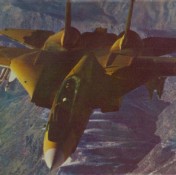Ukraine War, 21 November 2022: Another Q&A
Good morning everybody!
Once again, you’re sending so many questions, that it’s near-impossible to address them all — and, even if: only 2–5 people are going to read my answers, and then others are going to ask the same questions again.
Arguably, some of this is my own fault: after all, at least when it comes to losses, I do tend to ‘express myself in hyperbolas’. One way or the other, here you are: another ‘Q&A session’.
Q: USA have promised to supply hundreds of ‘loitering munitions’ to Ukraine in the first months of the war. Are there any details about their effectiveness, and can their number be higher than that of Russian-made Lancets?
A: AFAIK, the USA pledged the delivery of a total of either 410 or 4,100 Switchblade 300s to Ukraine. That is: it’s unclear if the Pentagon promised the delivery of 410 systems with 1 round or 410 systems with 10 rounds per system.
1.) Ever since, the USA (which is: the Pentagon) is de-facto zip-lip about delivery and deployment of Switchblades. The Russians are not complaining about them, and nobody is shown resulting videos.
2.) The experience in such cases is that ‘no news = bad news’. That when this happens, the weapon in question is not performing as expected. Should there be any doubts in this regards, compare the situation with that of NASAMS, where a mere week after delivery to Ukraine, the Pentagon was quick in announcing its ‘high efficiency’ (indeed a 100% intercept rate) — even if not specifying what should that mean.
Q: Details on Lancet?
A: Still researching this topic and, sorry, can’t do everything at once.
Q: Can NASAMS be as effective as claimed by the propaganda from the Ukrainian side?
A: Mind, it’s the Pentagon who claimed it for ‘100% effective’ — as, late on 15 November. So, if Ukrainians are doing the same, they’re ‘merely’ repeating US claims. And, since I’m usually ignoring official statements (once again: I’m not the least interested in discussing propaganda: that’s a pure waste of time) — and sincerely: no trace of clue who is claiming what ever since.
As for can it be 100% effective: nope. There is no 100% effective weapon: only a weapon that, if missing with the first shot, might hit with the second, or third, or fourth, or…. round…
Q: How many missiles is NASAMS deploying on average to destroy a single target?
A: No idea. Know no figures in this regards — which is no surprise (for me): I’m ‘good’ in regards of Soviet/Russian weaponry, and next to clueless in Western.
Q: Can the effectiveness of the Russian Lancets be a result of Ukrainians having to reduce the number of their air defence systems on the frontline, in order to be able to defend their cities?
A: AFAIK, nope. At least not yet. In Ukraine (like in Russia) the air force and air defence force is operating its own air defence systems, and the army/ground forces its own. A withdrawal of air defence systems of the ground forces would significantly weaken their own air defences, in turn enabling the VKS to fly large-scale air strikes, perhaps even ‘carpet-bomb’ Ukrainian frontlines by such bombers of the VKS like Tu-22M-3 from high altitude (outside the reach of light anti-aircraft guns and MANPADS’). So far, nothing of this kind has happened.
Much more than this: Lancet is ‘simply’ a type of weapon against which there is no effective defence system in large-scale operation — no matter where. Not in Ukraine, not in Russia, and not in the USA or the rest of NATO.
(Even if the USA would have delivered all the four AN/TWQ-1 Avenger anti-UAV/LPGM-systems the Pentagon pledged to deliver so far — and there is no evidence they did — due to the sheer expansion of the battlefield, that would be the proverbial ‘drop of water on the hot rock’.)
Q: Are there any initial insights into which side is complaining more and louder about the weather and is therefore less well-equipped and prepared?
A: Nope (at least none I know). And I doubt that any serious reports in this regards (except for plenty of guessing by journos) are ever going to become available…. Well, until, perhaps, in some 20–30 years, when whatever documentation is released to the public.
Q: (Summarised) The Russian strategy is to wear down Ukraine by attrition, ‘100,000+ casualties’ is ‘nothing’ for Russia, but a lot for Ukraine, and the West does not understand this, and is thus puzzled by ‘senseless Russian attacks’….
Yesno. The loss of 80,000–100,000–200,000 (range of estimates published by Western and Ukrainian sources so far) professional VSRF and VDV soldiers killed so far, has, effectively, crippled the Russian armed forces. In essence, Putin has no serious offensive capability left.
This is a matter of fact — and that regardless how many troops Putin has lost, i.e. what’s the truth about Russian losses in eight months of this war.
Replacing these by, say, 100,000 reservists, sounds ‘great’, ‘easy’, ‘logical’ and ‘must work’ — but, actually, is none of that. It is none because the reservists are neither as well-trained, nor as fit as lost professionals, and because they cannot be equipped with ‘the best’ in terms of equipment any more — because the equipment was shot away, cannot be manufactured ‘over night’, but it’s going to take years to make a new.
This is as important because the attrition of Putin’s armed forces resulted in the situation where these are losing the capability to impose similar rates of attrition to the Ukrainian armed forces like they used to cause back in period April-August this year.
With other words: a ‘war of attrition’ might sound ‘good’ for Putin but, actually, is counterproductive, first and foremost — and the longer it goes on, the more it works into Ukrainian hands. Sure, the Russians can send another 100,000 reservists to Ukraine, and another 100,000, and another 100,000 etc…. but all they’re going to achieve is to keep Ukrainians busy shooting these away. Putin has already lost the capability to impose serious attrition upon the ZSU (except in regards of its ammunition expenditure).
….as obvious from the fact that, regardless how many reservists Putin, Dvornikov, Zhidko, and Surovikin have ‘pumped’ into, say, Bakhmut or Avdiivka, the last three months, mass of their assaults was repelled with relative ease, while achieving between nothing and next to nothing.
Q: Have the Russians really lost 50,000 — i.e. 50% — of reservists and convicts they have mobilised since October?
A: It’s a mix of a rough calculation and hyperbole, and yesno.
Up front: mind that there are no reliable figures for anything that is to follow. Nobody has released dependable numbers — and is not going to release any even for long after the end of this war.
My estimate is that, in grand total, the Keystone Cops in Moscow have done their best to mobilise over 200,000, perhaps as many as 300,000. Why? Because Putin’s ‘boyars’ have the incentive to mobilise as many as they can, because that’s proving their loyalty and ‘effectiveness’.
Problem: the VSRF has no capacity to equip, train, organise and command all of these troops, plus ‘regular’ recruits (those 18-years-young drafted every spring and autumn).
My estimate is that about 70,000 reservists have reached Ukraine by now — plus around 23,000 convicts ‘recruited’ by Wagner PMC. The rest is still ‘undergoing training’ inside Russia, even if — most of the time — this consists of standing around and doing nothing (except for freezing or being hungry). The way I see it, a ‘confirmation’ for about 100,000 having reached Ukraine is that these have strained the logistics system to the point where Putin had no options left but to withdraw from Kherson. With other words: the appearance of 100,000 reservists was as ‘productive’ as ‘counter-productive’.
But in turn this means: no, the Russians have not lost ‘50% of reservists they have mobilised since October’. At most, they’re on the best way of losing as many.
However, gauging by available reports, the answer to the first part of your question is positive: the rate of their troop-losses has rapidly increased since October, and is reportedly at between 400 and 800 killed in action (KIA), wounded in action (WIA), missing in action (MIA) — a day.
Simple calculation: take the medium figure of 600 losses a day, and consider today is two months since Putin’s mobilisation of 21 September (more precisely, it’s 62 days, but let’s say it’s 60).
What’s the result?
(Clue: no surprise there are people talking about 200,000 KIA, WIA, MIA etc. — on each side — in this war so far.)
Q: Sources for my estimates on the number of mobilised reservists and the number of them deployed in Ukraine?
My own estimates, based on reading dozens of related articles (though none specific). And yes, I tend to ignore all the possible ‘official figures’ (regardless if provided by Putin, Shoygu, Zelenskyy, or Saint Peter and Paul).
Q: Russian capability to continue manufacturing necessary weapons?
A: I recommend the article linked below: think, it’s covering almost everything one needs to know in this regards.







